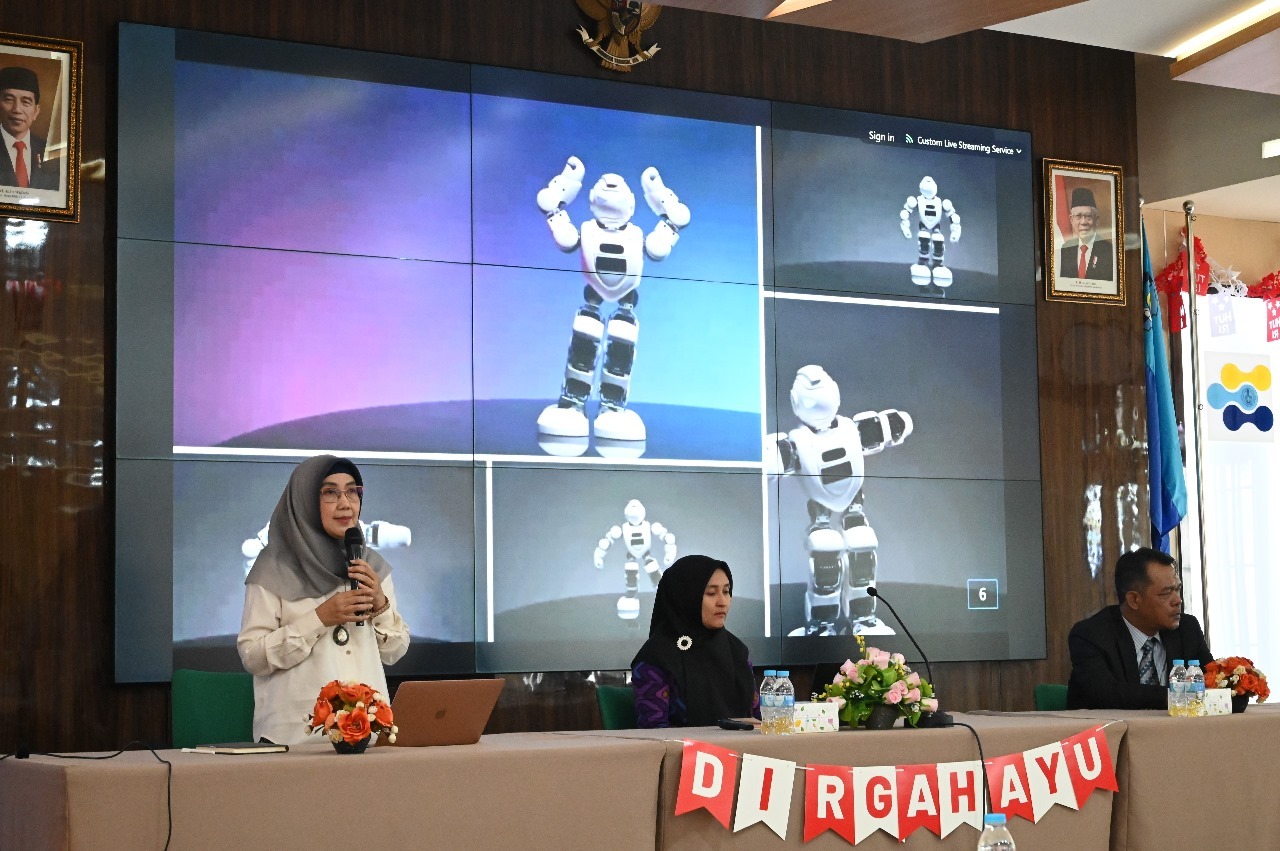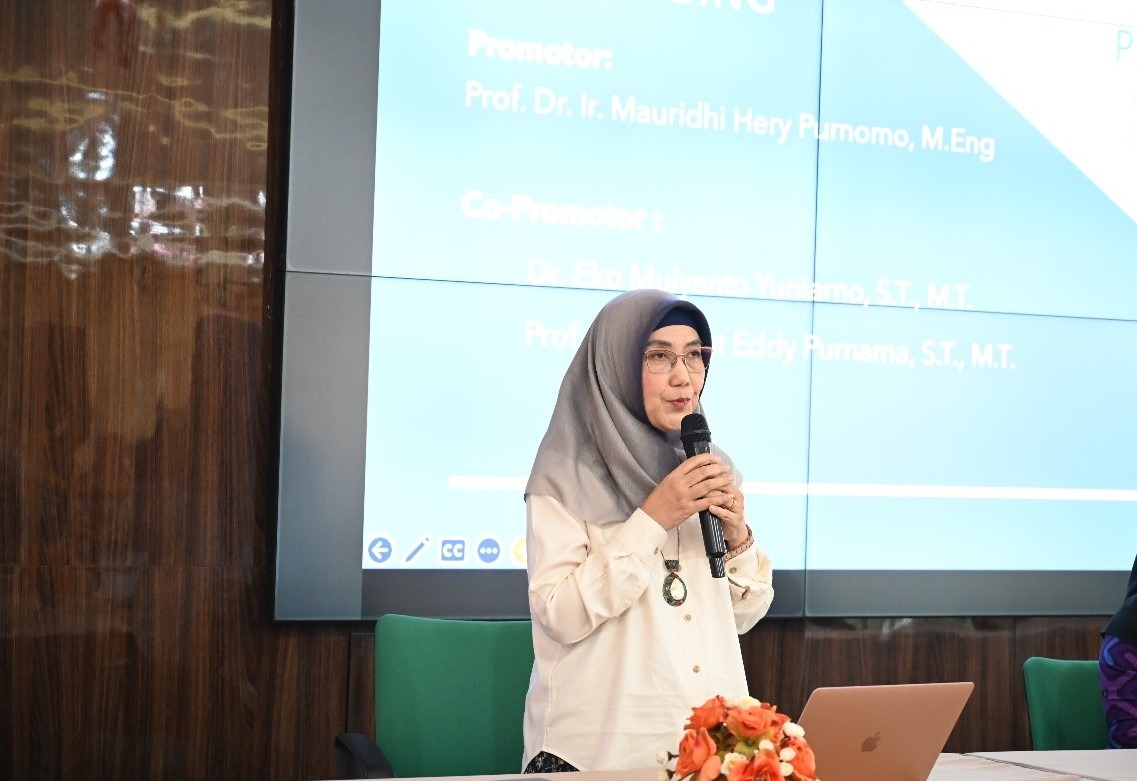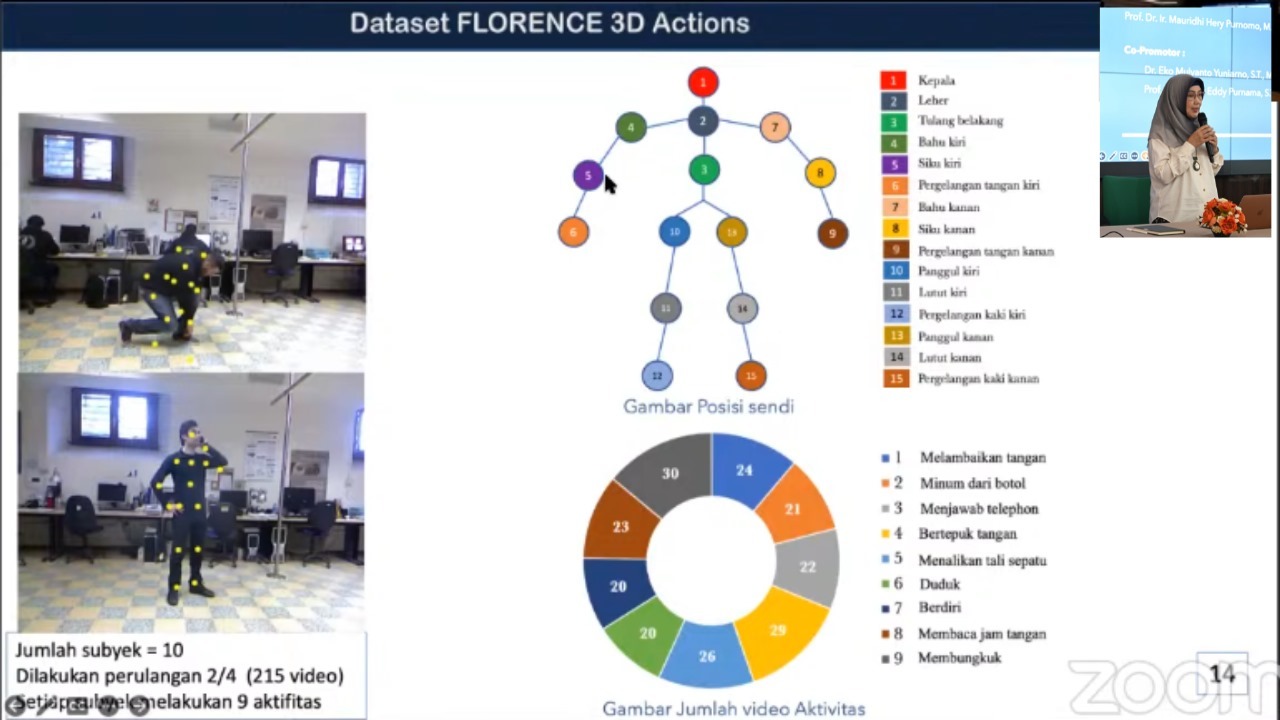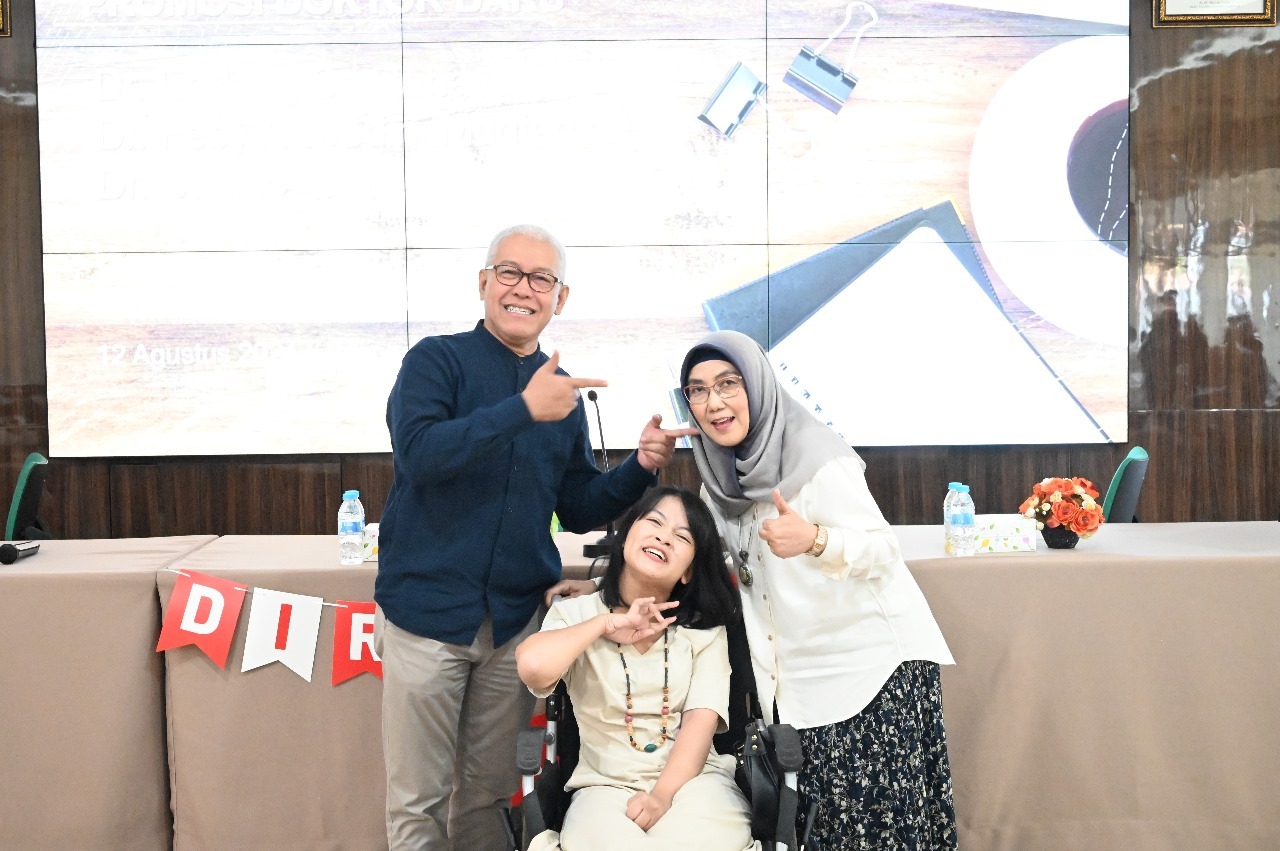ITS Doctor Develops Human Activity Recognition Method Utilizing AI

Dr Ir Endang Sri Rahayu MKom (standing) explaining her dissertation on the combination model of joint angle shift using Artificial Intelligence (AI)
ITS Campus, ITS News – Research on Human Motion Analysis (HMA) is now advancing in several fields, including healthcare. A new doctoral graduate from Institut Teknologi Sepuluh Nopember (ITS), Dr. Ir. Endang Sri Rahayu, M.Kom, has developed an innovative method to recognize human activities by observing joint points using Deep Convolutional Neural Networks (DCNN), a method within Artificial Intelligence (AI).
During her open doctoral defense held at the ITS’ Department of Electrical Engineering on Monday (12/8), Endang emphasized the importance of research in human activity recognition. This research supports medical rehabilitation processes, elderly activity monitoring, and the development of intelligent robot movements. “To address various human activities, the research needs to be developed using various methods to achieve high accuracy,” she explained.
Endang further highlighted that recognizing human activity is critical in healthcare because it can detect abnormal movements. Such abnormal movements could serve as an indicator to monitor disease risks, especially in the elderly. “Therefore, research on human activity observation becomes essential,” said the lecturer from Jayabaya University’s Department of Electrical Engineering, Jakarta.

Dr Ir Endang Sri Rahayu MKom when presenting her research related to Human Motion Analysis (HMA) in a doctoral promotion hearing at the Department of Electrical Engineering ITS
Driven by this problem, Endang’s dissertation titled A Combination Model of Joint Angle Shifts with Deep Learning to Recognize Human Activities aims to recognize human activities by extracting joint features. “This research analyzes joint positions using the DCNN model,” explained the Jombang-born researcher, who was born on April 27, 1965.
Using the Florence 3D Actions dataset, this research observed 15 human joint points, including the head, shoulders, and ankles, which serve as indicators of human movement. Joints were chosen as movement indicators because they connect the human skeleton and move following human activity patterns. “Thus, joints are the ideal indicators as joint points represent human activity patterns,” explained the ITS Electrical Engineering graduate.

Dr Ir Endang Sri Rahayu MKom when explaining the joint points observed in one of her studies during a trial which was also broadcast via Youtube
Endang added that the distance between joints is calculated frame by frame from a segment of observation video using the Euclidean distance technique. However, this method struggled to distinguish some human activities, such as sitting and standing. “This occurs because the joint distance-based method only considers absolute joint position changes without accounting for movement direction,” she explained.
Delving deeper, Endang noted the need for a method that could differentiate between activities with similar movement distances. She introduced a joint angle shift method that successfully distinguished activities like sitting and standing, which have similar joint position changes but differ in movement direction.

Dr Ir Endang Sri Rahayu MKom (right) with his family after the doctoral promotion session held at the ITS Electrical Engineering Department
Reporter: Mohammad Febryan Khamim
Related News
-
Faithful in Times of Joy and Sorrow, Married Couple Graduate with Doctorates Together at ITS
ITS Campus, ITS News — As though guided by one heart and one soul, Dr Hanugra Aulia Sidharta ST
August 14, 2024 18:08 -
ITS Wins 2024 Project Implementation Award for Commitment to Gender Implementation
ITS Campus, ITS News —Not only technology-oriented, Institut Teknologi Sepuluh Nopember (ITS) also show its commitment to support gender
August 14, 2024 18:08 -
ITS Professor Researched the Role of Human Integration in Sustainable Architecture
ITS Campus, ITS News –The developing era has an impact on many aspects of life, including in the field
August 14, 2024 18:08 -
ITS Sends Off Group for Joint Homecoming to 64 Destination Areas
ITS Campus, ITS News — Approaching Eid al-Fitr, the Sepuluh Nopember Institute of Technology (ITS) is once again facilitating academics who want
August 14, 2024 18:08
